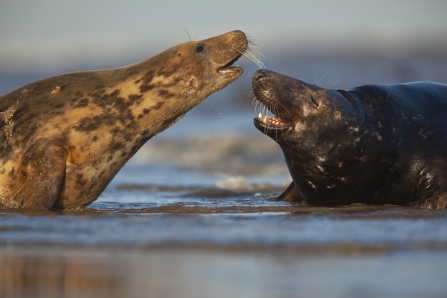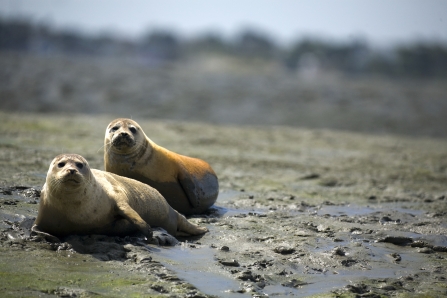If you've been enjoying the recent warm weather out on our coasts you might have seen seals playing in the waves or soaking up the sunshine. But did you know that we actually have two seal species in the Solent, with unique appearances and personalities? Just remember these top tips for identifying each kind, and you'll be spotting the difference in no time.
Splendid Seals: How to Tell Apart our Local Species

© Neil Aldridge
Grey seals have heads that appear oval from the front, and longer noses with parallel nostrils. They grow to a larger size, often reaching over two metres in length. When hauled out on the shore they stay closer together and are more likely to be vocal. Their pups are born with fluffy white coats that they must moult before taking to the water.

Common seals in Chichester Harbour © Chas Spradberry
Common or harbour seals have heads that appear round from the front, and shorter noses with nostrils that form a 'V' shape. When hauled out they value their space and are relatively quiet. Their pups are born with adult coats, allowing them to swim and dive when only a few hours old. Despite their name they're actually less common than grey seals!
How you can help
We keep an eye on our local seal populations as part of our project Secrets of the Solent, so if you spot any in our area please let us know. Our online form makes it easy to tell us about your sightings, and the information you share can help us to secure wildlife protections and challenge harmful development.

